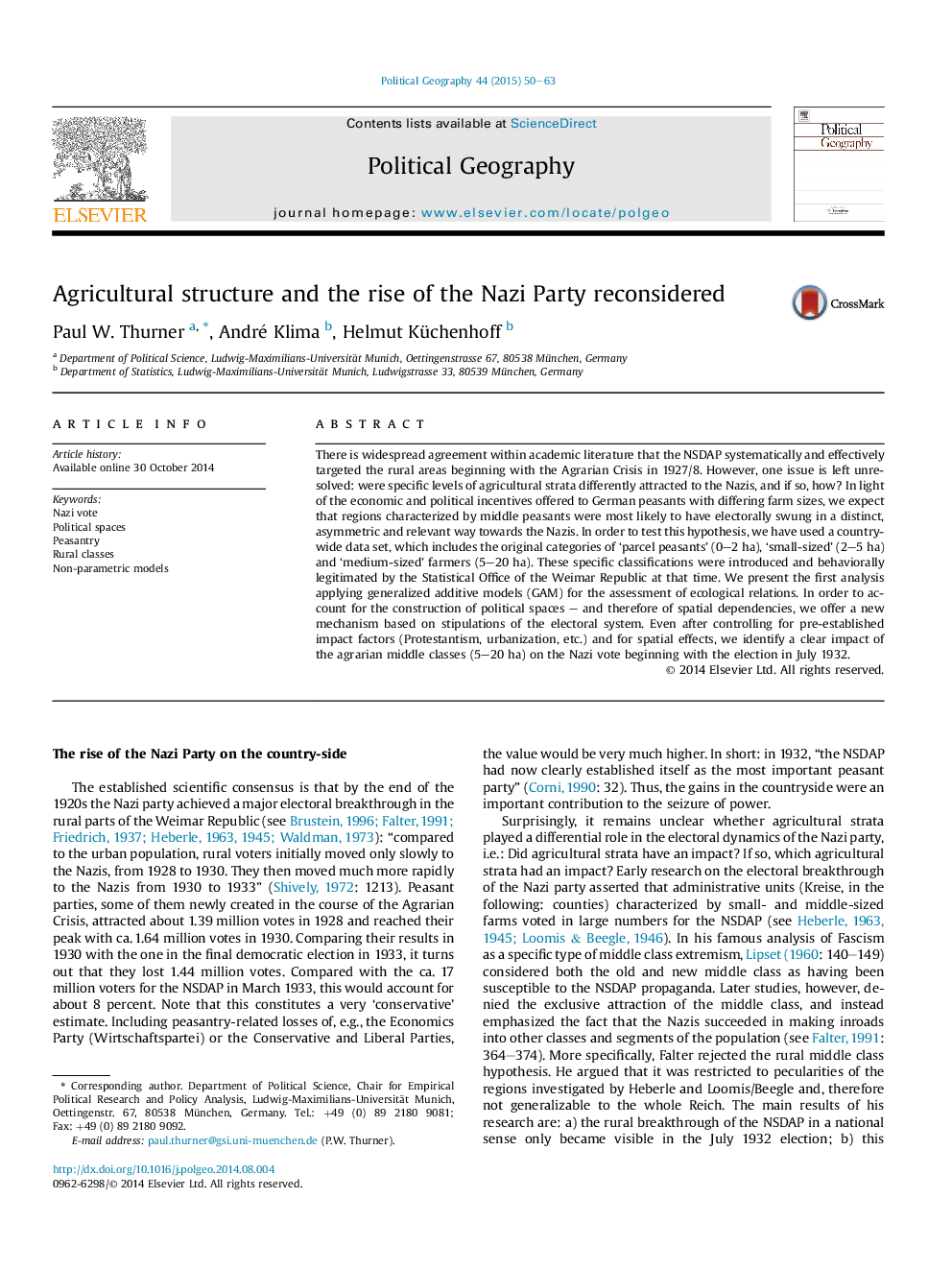| Article ID | Journal | Published Year | Pages | File Type |
|---|---|---|---|---|
| 1061910 | Political Geography | 2015 | 14 Pages |
•First Application of Generalized Additive models (GAM) to NAZI vote.•First analysis using newly collected data following the original classification of rural classes in the Weimar Republic.•First country-wide identification of a clear statistical impact of the share of midsize farms on shares of Nazi vote 1932–1933.•Refutation of previous results (Falter, 1991).•Statistical control for spatial effects.
There is widespread agreement within academic literature that the NSDAP systematically and effectively targeted the rural areas beginning with the Agrarian Crisis in 1927/8. However, one issue is left unresolved: were specific levels of agricultural strata differently attracted to the Nazis, and if so, how? In light of the economic and political incentives offered to German peasants with differing farm sizes, we expect that regions characterized by middle peasants were most likely to have electorally swung in a distinct, asymmetric and relevant way towards the Nazis. In order to test this hypothesis, we have used a country-wide data set, which includes the original categories of ‘parcel peasants’ (0–2 ha), ‘small-sized’ (2–5 ha) and ‘medium-sized’ farmers (5–20 ha). These specific classifications were introduced and behaviorally legitimated by the Statistical Office of the Weimar Republic at that time. We present the first analysis applying generalized additive models (GAM) for the assessment of ecological relations. In order to account for the construction of political spaces – and therefore of spatial dependencies, we offer a new mechanism based on stipulations of the electoral system. Even after controlling for pre-established impact factors (Protestantism, urbanization, etc.) and for spatial effects, we identify a clear impact of the agrarian middle classes (5–20 ha) on the Nazi vote beginning with the election in July 1932.
